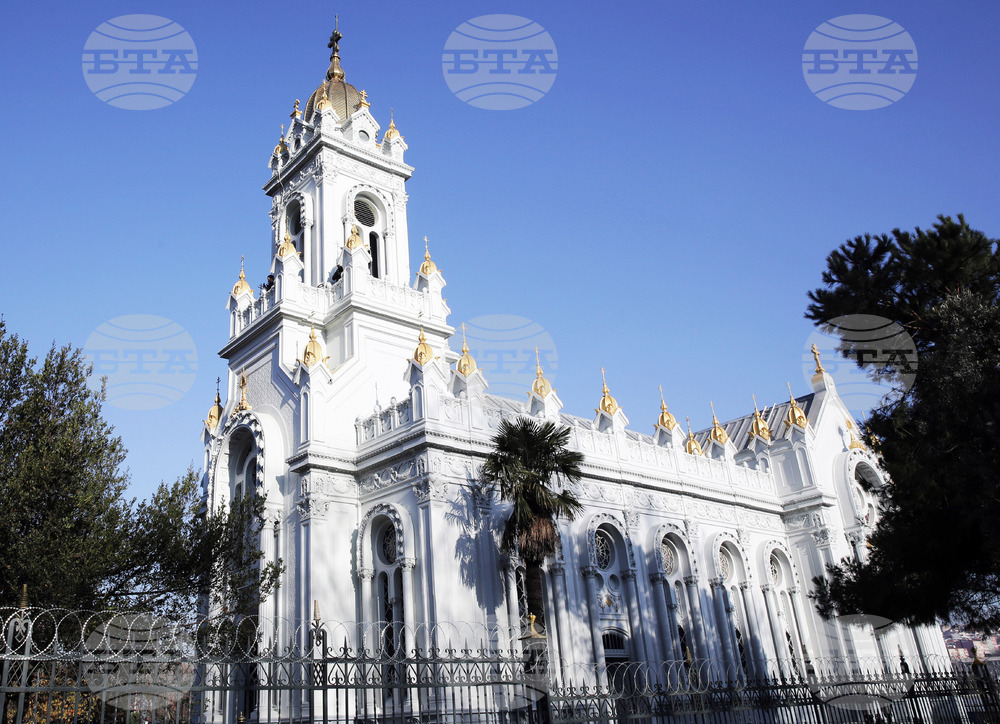site.btaJuly 14, 1896: Final Assembling of St Stephen "Iron" Church in Istanbul


On July 14, 1896, the St Stephen "Iron" Church in Istanbul was assembled. The church is iconic for Bulgarians as its site was where they first declared their wish for independence from the Ecumenical Patriarchate, as a result of which the Bulgarian Exarchate was born.
St. Stephen's was built in the mid-19th century on donations from the Bulgarian community in Istanbul. It was assembled of prefabricated cast-iron elements in the Fanar residential area on the Golden Horn's shore on a lot donated by Bulgarian statesman Stefan Bogoridi.
The design was commissioned by competition to Armenian architect Hovsep Aznavur. This well known master produced a highly original solution. The church was to be built of prefabricated cast-iron and hammered-iron panels, weighing some 500 t altogether, magnificently executed by the Rudolf Philipp Waagner Company of Vienna.
The same engineers have manufactured two identical churches, which were supposed to be built in Australia and Romania. The first sank at sea while being transported, while the second church was destroyed during a bombing, thus leaving St. Stephen the only Eastern Orthodox iron church in the world.
The panels for St. Stephen's transported by sea in 150 small ships from Trieste to Constantinople and were assembled on site by 15 workers of the company between December 1895 and 14 July 1896, using 4 million nuts, bolts, rivets and weldings - much like the Eiffel Tower was built.
The two-storey building stands 15 m high, with the belfry adding another 5 m to its total height, and has a total area of 500 sq m.
The solemn consecration, which drew Bulgarians from all over the Balkan Peninsula, was conducted on the Feast Day of the Nativity of the Virgin, 8 September 1898, by Exarch Yossif I.
In style, St. Stephen's is a radical departure from the Eastern Orthodox tradition. It is a three-nave pseudo-basilica shaped as a Latin cross, with a broad transept and large Gothic windows (the stained glasses for them were not done for lack of money). The church is 32.5 m long, 12.5 m wide, and 19.5 m high, including the belfry. The sculptural ornamentation of the white exterior harmoniously combines floral motifs interwoven into
garlands and angelic heads. Reliefs representing a bishop's mitre and two crossed crosiers are placed above the northern and southern entrances. The eclectic Neo-Gothic and Neo-Baroque architecture and ornamentation of the church is in the typical style of the 19th century.
Its iconostasis, also of metal, has exquisite ornaments combining scriptural scenes with floral motifs. The icons, fine examples of late 19th c. sacred painting, were done by Russian academic painter Klavdii Lebedev and masters from Debur. The two thrones, one for the monarch and the other for the church primate, flanking the altar, emphasize the grandeur and importance of their intended occupants. They are all covered in
wood carvings and feature the ciphers of the then incumbent prince and exarch. One remarkable and untypical iconostasis icon is of the Virgin with Sts Cyril and Methodius Equal to the Apostles, the inventors of the Slavonic script. St. Petka, one of the most revered Bulgarian saints, is also beautifully painted. There are six bells, of which the largest weighs 450 kg.
The church underwent a major restoration project that was completed in 2018 after decades of wear and neglect. The restoration was supported by Bulgarian and Turkish authorities and involved specialists in metal conservation and historical architecture.
The reopening of the church was celebrated as a cultural milestone, reaffirming the shared heritage between Bulgaria and Turkiye.
/NF/
Additional
news.modal.image.header
news.modal.image.text
news.modal.download.header
news.modal.download.text
news.modal.header
news.modal.text







